The Process of Creating High-Quality Voiceover Recordings: From Script to Delivery
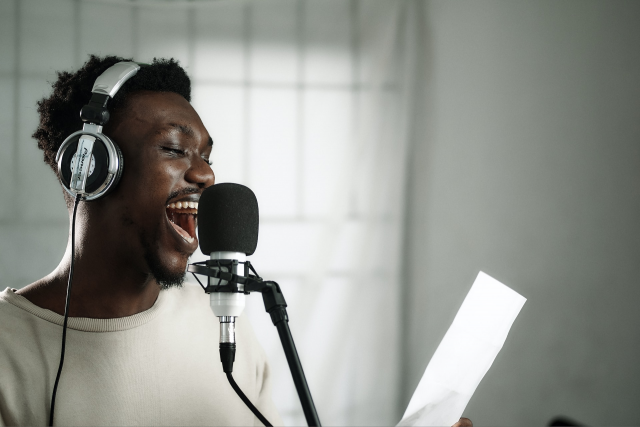
As a marketing agency, you're no stranger to juggling multiple tasks, and voiceover production is often one of them. However, what if you could delegate this intricate task to seasoned professionals?
Enlisting a voiceover service can greatly streamline the voice recording process, providing you with top-notch audio recordings suitable for podcasts, video presentations, or any other project on your docket.
But what exactly goes into this process?
This post aims to walk you through the meticulous journey professionals undertake to produce superior audio recordings for their clients - from inception to completion. This in-depth understanding allows you to set your expectations accurately when you decide to hire a voiceover service.
This article in summary
-
Know what tone you're after, then write a script for it. Hire a voiceover talent that can deliver the style you're after.
-
Ensure that the voiceover talent has everything they need: microphone, computer, and voice recording software. They should also record in a room that's free from background noise.
-
Before recording, voiceover talents must pay close attention to their audio level to correct their audio settings.
-
Determine whether the talents mix and edit the audio files to produce cleaner sound. Get them to export your files in the correct format, bit rate, and sample rate.
-
Be consistent when hiring talents for marketing campaigns. Use a third-party service if you're having trouble finding talents for your project.
Pre-Production
Whether you're recording for e-learning, instruction videos, commercials, audio guides, presentations, webinars, or even telephone messages, the process is mostly the same. Most of the work will boil down to preparation.
Talent
Selecting a professional voice talent requires careful deliberation over a few key factors. First and foremost, understanding your audience is crucial. Seek out a voice that will resonate with your target demographic, making your campaign more impactful.
Budget considerations are equally important. Determine what you can afford for voiceover services. While seasoned professionals may command higher fees, there are emerging talents who offer compelling performances at a more budget-friendly rate.
Typically, most voiceover professionals provide demo reels, which are invaluable in identifying the perfect voice for your campaign. Alternatively, exploring the route of auditions can also be an effective method for discovering your campaign's ideal voice.
If you need help with auditions, a company like VoiceProductions is a perfect solution. They set up auditions for you and select suitable talent for your project.
Software
Imagine the luxury of employing a professional service like VoiceProductions for your voiceover needs. No need to invest in expensive software or struggle to learn its usage; these experts handle it all.
They start by mastering various audio recording software, each with a unique audio interface and features. They skillfully avoid issues like mic peaking or clipping, where overly loud voices or background noise can distort the sound.
Moreover, they skillfully adjust settings to modify how talents sound, experimenting until they hit the perfect tonal balance.
The essence of a professional service lies in its expertise and attention to detail, ensuring a flawless voiceover, leaving you free to focus on your core goals. So why not sit back and let the professionals create the magic?
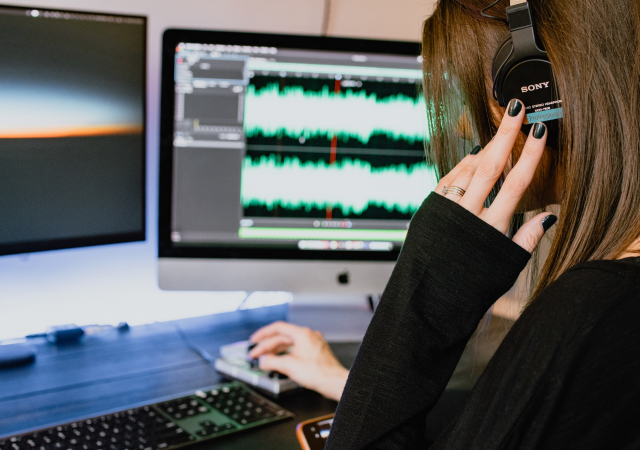
Recording
Think about the meticulous preparation undertaken by professional voiceover companies. They ensure every piece of equipment is tested and ready, at least an hour before the recording begins. This preparation means everything is set in place before the talent steps into the studio.
As the client, you're freed from overseeing the recording process. These voice over companies are known for their efficiency, recording audio clips swiftly and effectively, without the need for supervision.
This leaves you with ample time to concentrate on your core business tasks, while they focus on perfecting your project.
However, it's beneficial to have a glimpse into the behind-the-scenes work during the recording process.
Let's explore some of the intriguing tasks that audio technicians and talents navigate while recording.
Equipment
The journey of creating a compelling voiceover begins with the right equipment. A Professional voice actor meticulously prepares his or her arsenal of tools before they record voice overs. This includes:
-
Microphone
-
Pop filter (optional)
-
Computer or laptop
-
Voice recording software
-
Audio output (headphones, speakers, etc.)
The choice of microphone plays a significant role in the audio quality of your recordings. While some companies invest in premium models, others use mid-range mics that can produce high-quality audio, especially for remote work.
Regardless of the brand or model, most actors prefer wired audio recorder over Bluetooth for cleaner audio. XLR microphones are particularly favored by audio engineers for their precision control.
The microphone universe comprises of dynamic, condenser, and ribbon types, each with different pickup patterns such as cardioid and omnidirectional.
The choice of microphone directly impacts the audio quality, and professional voice actors would typically avoid simple audio recorders due to their inferior sound quality.
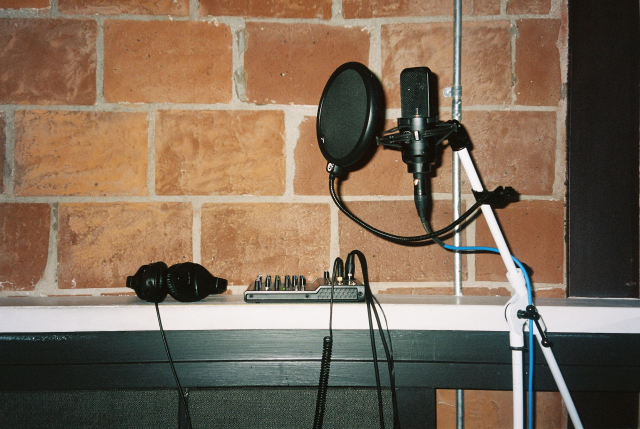
Setup
The director is usually responsible for the on-site recording setup. This begins with ensuring optimal recording conditions in the studio, starting with the microphone placement. They
must make sure the talent remains a few inches away from the microphone, as sensitive microphones can pick up unwanted sounds, including mouth noises and heavy breathing.
If needed, the mic stand is placed on a separate table to minimize desk sounds, with high-end studios utilizing mic stands and mounts with built-in shock absorption.
No need to worry about the setup when working with VoiceProductions. All of their talent works with quality gear and from a professional setup!
Audio levels
Audio engineers then adjust the audio levels on the audio recording software, tailoring them to each talent's unique voice volume. While levels can be adjusted during post-production, achieving the right balance during recording simplifies the process.
Noise Sources
Everyone in the room during the recording must be vigilant of potential noise sources, such as the clink of jewelry or the sound of a mouse scroll wheel.
The microphone may even pick up the rustle of script pages, prompting many talents to read from a computer or tablet to minimize noise.

Vocal Exercises
Before recording, talents can perform vocal exercises to warm up their vocal cords and improve performance.
These can include breathing exercises, tongue twisters, lip trills, or even humming, each contributing to delivering the best vocal performance.
Audio editing
The editing journey commences with a thorough review of all audio files against your script, ensuring every dialogue is captured, and the voice sound is on point.
If any sections are unsatisfactory, the talent may be recalled for re-recording. Once the content is approved, the team can merge the files, remove unwanted noise, and ensure seamless transitions.
Trimming the recording to fit your target runtime and maintaining consistent audio levels across all voices is equally important. This fine-tuning process ensures no talent outshines the other unless intended.
Mixing
Mixing is the artful process of blending and refining multiple audio tracks. This step becomes vital when adding supplementary audio elements like background music or sound effects to your voiceovers. It's comparable to creating a symphony where each element complements the other without overwhelming the primary voice.
If the components of an audio piece are combined without proper mixing, the result can be lackluster, potentially muffling the voiceover, regardless of how eloquent the talent may be. Successful mixing ensures the voiceovers remain polished, harmonious, and discernible.
So, what are the magic tricks these audio engineers employ to elevate audio clips?
Firstly, they fine-tune the audio levels, typically amplifying the voiceover while toning down background elements. This ensures the narration stands out clearly amidst the accompanying sounds.
Next, they delve into equalization settings, customizing the tone of each track to align with the project's objectives. By manipulating specific frequency ranges, they can enhance clarity, making the recording sound more lucid and pleasing.
Moreover, they experiment with sound effects such as reverb and delay, assessing whether these elements can boost the quality of the final output. Sometimes, subtle adjustments in these parameters can add a natural resonance to the recording.
In essence, mixing is a meticulous process that transforms raw audio components into a harmonious, professional-sounding piece that captivates listeners.
Post-Production
Just because the production team finishes recording voice overs doesn't mean the job is over. Now they'll do post-production work.
There's no such thing as a perfect audio file. There will always be something to could clean up and polish. Luckily for you, professionals know what to look for and how to fix them.
VoiceProductions calls its post-production process Mastering and Editing. The process includes the removal of mistakes, adjusting levels, and adding effects.
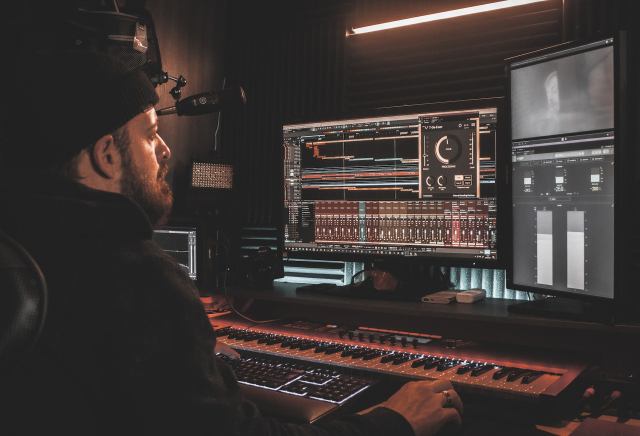
Quality Assurance
Once the editing stage concludes, a dedicated Quality Assurance team steps in, their eyes and ears sharply focused on consistency, accuracy, and timing. This is the unsung hero of the production process.
Take, for instance, VoiceProductions. They scrutinize each audio file, their mission being to prevent any error from creeping into the final product.
This vigilant team evaluates the tonal quality of the recording, ensuring it exudes the right warmth and robustness of bass. They also verify that the files are exported in the precise format you require.
In essence, the Quality Assurance team serves as the final gatekeepers, ensuring the audio you receive is nothing short of perfection.
Finalizing the Audio
As the client, your voice matters in the finalization of your audio recording.
Exporting voiceover files involves several critical choices. Selecting the right file format, for instance, is paramount. Common formats include WAV, AIFF, and MP3. If you seek uncompressed audio and can manage larger file sizes, WAV or AIFF are ideal choices. However, for a more space-efficient option, albeit with slightly compromised quality, MP3 stands out.
The sample and bit rate are equally significant. Higher rates capture more information but increase the file size. Most audio editors typically utilize a 44.1 kHz sample rate and a 16-bit rate, but these can be adjusted based on your specific needs when using a voiceover service.
If you are juggling multiple voiceover projects, consider implementing a standard file naming convention and an organized folder structure. These practices streamline your workflow, reducing confusion and enabling faster file retrieval.
In essence, your involvement in these decisions aids in tailoring the final audio product to your exact needs, ensuring a seamless and efficient project completion.
When working with VoiceProductions the recording is always delivered in the format you require or request!
Best Practices and Tips for Creating High-Quality Voiceover Recordings
Here are some voiceover recording best practices to help you get high-quality voice files.
Being Consistent
Maintaining consistency in your marketing campaign is best achieved by employing the same voice talent throughout. Switching voice actors can disrupt the auditory continuity, potentially startling your audience.
This underscores the importance of selecting the right talent - the chosen individual essentially personifies the voice of your marketing campaign.
If resources permit, we recommend utilizing a casting service to pinpoint the perfect talent for your project. Companies like VoiceProductions offer this service, often free of charge for their clients, thereby alleviating the challenge of casting talents.
In essence, a consistent voice resonates with your audience, amplifying the impact of your campaign, while a casting service can be your invaluable partner in finding that distinctive voice.
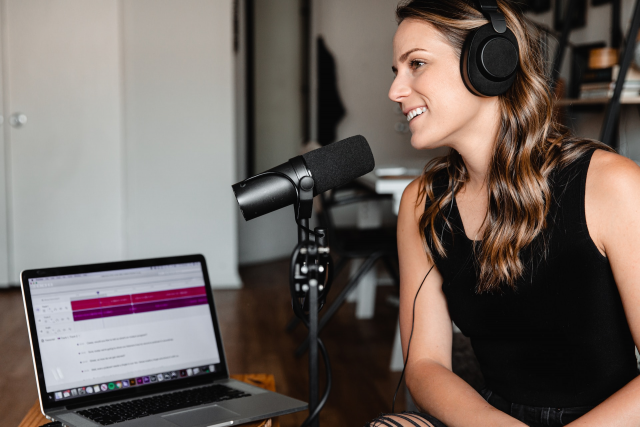
Working With International Voiceover Artists
Depending on your target market, you may need to engage with international voiceover artists. For instance, creating a TV commercial intended for a French audience might necessitate such a partnership.
Today's globalized and digital world simplifies this process significantly. Artists equipped with the necessary hardware and a reliable internet connection can deliver high-quality work from virtually any corner of the globe.
One hurdle you might encounter is a language barrier if the talent does not share your language. In such instances, employing a liaison to facilitate communication could be beneficial.
Moreover, clear articulation of your vision is crucial. The tone of an announcer differs markedly from a narrator's, for instance. If an accent is essential for your project, include this detail in your brief.
In essence, while working with international talent may present unique challenges, it can be smoothly navigated with clear communication and the right resources.
Adapting Voiceover Recordings for Different Markets and Platforms
Executing a national ad campaign differs significantly from a localized one. A global campaign for a brand like H&M, for instance, won't mirror a campaign for a regional food supplier. This distinction should be mirrored in your voiceover recording.
If your campaign is laser-focused on a specific town or state, recruiting a voice talent from that region can add a layer of authenticity to your voiceover.
Similarly, the platform on which you publish your ads holds importance. For instance, if you're targeting a younger demographic on social media platforms like TikTok, your voice talent should resonate with that audience, sounding as if they naturally 'belong' there.
For B2B company campaigns, a voice talent that delivers lines with an authoritative tone is essential. To command respect and trust, you need to sound like a seasoned professional within your specific category or niche.
In essence, tailoring your voiceover talent to match the nature of your campaign and the intended audience can significantly enhance its impact and authenticity.

Conclusion
In summary, creating an impactful voiceover campaign is a nuanced process, demanding attention to detail at every step, right from the initial script and storyboard creation to the final audio file export. Ensuring a quiet, sound-dampened recording environment, meticulous post-production editing, and careful audio mixing are all vital steps in the production pipeline.
The value of a professional voiceover service like VoiceProductions shines in the intricacies of these processes, eliminating the need for you to navigate the complexities of audio software or worry about quality issues. The choice of voice talent plays a crucial role in your campaign's success, often becoming the distinctive voice of your marketing initiative.
Working with international artists can broaden your campaign's appeal, provided communication barriers are effectively managed. Moreover, the voiceover should reflect the nature of your campaign, whether it is localized or global, aimed at a younger demographic on social media or targeting professional B2B companies.
In essence, the journey to a successful voiceover campaign is a collaborative endeavor, blending your vision with professional expertise to create an end product that resonates authentically with your intended audience. This journey may be complex, but the end result - an engaging, impactful voiceover campaign - is worth every step.